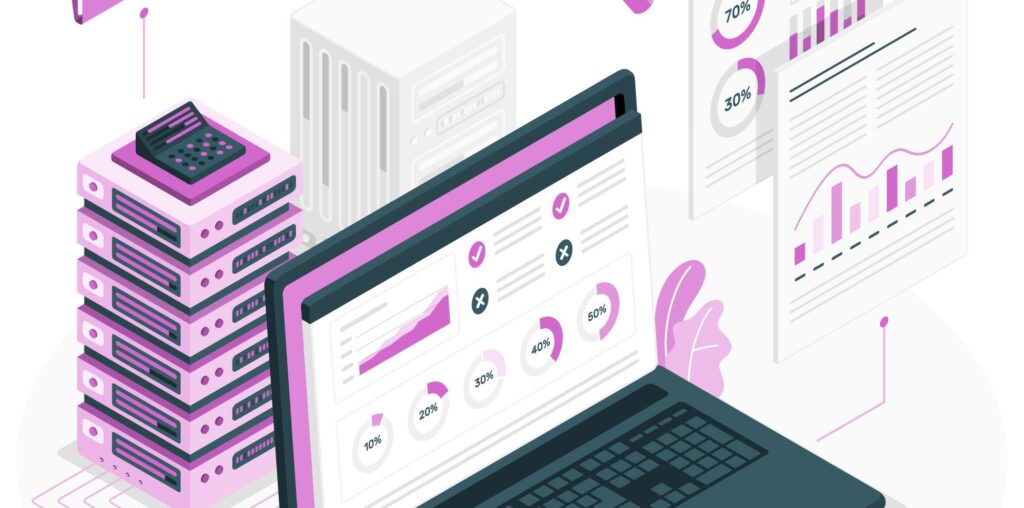Introduction to Data Labeling
In a data-driven world, the success of machine learning models hinges on one crucial element: reliable data labeling. Imagine trying to teach a child to recognize animals without showing them what those animals look like. That’s exactly what happens when algorithms are fed unlabelled data. Data labeling is the process of tagging or annotating datasets so machines can learn and make predictions based on that information.
As businesses increasingly rely on artificial intelligence, the demand for high-quality labeled data has skyrocketed. Companies across various industries—from healthcare to finance—are tapping into this resource to enhance their models’ performance and improve decision-making processes. But not all data labeling services are created equal. Finding a trustworthy partner in this niche can be daunting but is essential for achieving your AI aspirations.
Let’s dive into how you can navigate the landscape of data labeling services effectively!
Importance of Reliable Data Labeling
Reliable data labeling is crucial for the success of machine learning models. Without accurate labels, algorithms can become misguided, leading to poor performance.
Quality labeled data acts as a foundation. It helps machines learn from patterns and make informed decisions. When businesses invest in trustworthy data labeling services, they enhance their model’s accuracy.
Moreover, reliable labeling minimizes errors during training phases. This efficiency translates into cost savings and faster project completion times. Companies that neglect this aspect often face setbacks down the line.
In sectors like healthcare or finance, precision is vital. Mislabeling can lead to serious consequences, emphasizing the need for dependable services in these fields.
Quality matters more than quantity when it comes to labeled datasets. Organizations benefit greatly from prioritizing reliability over speed or low costs in their data labeling efforts.
Factors to Consider when Choosing a Data Labeling Service
- When selecting a data labeling service, several key factors come into play.
- First, assess the provider’s expertise in your specific industry. Different sectors may require specialized knowledge for accurate annotations.
- Next, consider the quality of their work. Look for testimonials or case studies that showcase their precision and reliability.
- Scalability is another critical aspect. Can they handle your project as it grows? A flexible service can adapt to your changing needs over time.
- Additionally, evaluate turnaround times and efficiency without compromising quality.
- Examine pricing structures carefully. Ensure you understand what you’re paying for and if there are any hidden costs involved.
- A comprehensive understanding of these elements will guide you toward making an informed decision in choosing a data labeling service that suits your requirements perfectly.
Types of Data Labeling Services
Data labeling services come in various forms, catering to diverse needs. One common type is image annotation, where images are tagged with specific labels for tasks like object detection or segmentation. This helps train computer vision models.
Text annotation is another essential service. It involves labeling parts of text data, such as sentiment analysis or entity recognition. Properly labeled text data can significantly improve natural language processing applications.
Audio and video labeling also play crucial roles in machine learning projects. For audio files, this could mean transcribing speech or identifying sound events. Video labeling often includes tracking objects over time to enhance surveillance systems or autonomous vehicles.
Each type of service has unique requirements and complexities, so understanding these differences is vital when selecting a provider that aligns with your project goals and expectations.
The Process of Data Labeling
The process of data labeling begins with defining the objectives. Clear goals help determine what kind of labels are needed and how they will be used.
Next comes data collection. This involves gathering relevant datasets, which can vary in size and complexity. Quality sources are essential for effective training.
Once the data is collected, it undergoes preprocessing. This step ensures that the information is clean and organized before labeling begins.
Labeling itself can involve manual or automated methods depending on project needs. Human labelers often bring context that machines may miss while automation speeds up repetitive tasks.
After labeling, quality assurance plays a crucial role. Review processes ensure accuracy by cross-checking labeled data against established standards.
Feedback loops allow for continuous improvement in both human and automated systems, enhancing future labeling projects significantly.
Case Studies: Success Stories from Companies that Used Data Labeling Services
- Many companies have transformed their operations through effective data labeling services. For instance, a healthcare startup used these services to train its AI models for diagnosing diseases. By implementing precise and comprehensive data annotation, they improved accuracy by over 30%, leading to better patient outcomes.
- In another example, an e-commerce platform leveraged data labeling to enhance its recommendation algorithms. With labeled product images and descriptions, the platform saw a significant increase in user engagement and sales conversions.
- A financial institution also benefited from data labeling by refining its fraud detection systems. Through meticulous categorization of transaction datasets, they reduced false positives significantly while capturing more genuine fraudulent activities.
- These success stories illustrate how tailored data labeling can drive innovation across various industries, enhancing performance and customer satisfaction alike.
Best Practices for Working with a Data Labeling Service Provider
Establish clear communication from the start. Articulate your project goals, timelines, and expectations. This will help prevent misunderstandings later on.
Regular check-ins can make a difference. Schedule updates to track progress and address any challenges that may arise during the labeling process.
Provide comprehensive guidelines for your data. Include examples to illustrate what you’re looking for. The clearer you are, the better results you’ll receive.
Encourage feedback and collaboration. Create an environment where both teams feel comfortable sharing insights or concerns regarding the labeling tasks.
Consider quality assurance measures. Implement checkpoints throughout the process to review labeled data before final submission, ensuring it meets your standards.
Build a long-term relationship with your provider if they meet your needs consistently. A trusted partnership can lead to faster turnaround times and improved accuracy in future projects.
Conclusion
Finding a reliable data labeling service is essential for businesses looking to harness the power of AI and machine learning. Quality labeled data can significantly enhance model performance, ensuring accurate predictions and insights. By considering factors like expertise, scalability, and technology used, you can make an informed decision.
Understanding the types of services available will help you align your needs with what providers offer. The labeling process should be transparent and well-structured to ensure consistency and accuracy in results.
Learning from case studies shows that companies leveraging professional data labeling services have achieved remarkable outcomes. Implementing best practices when collaborating with these providers further ensures optimal results.
Navigating the world of data labeling requires careful thought, but with the right approach, you’ll find a partner capable of elevating your projects to new heights.



